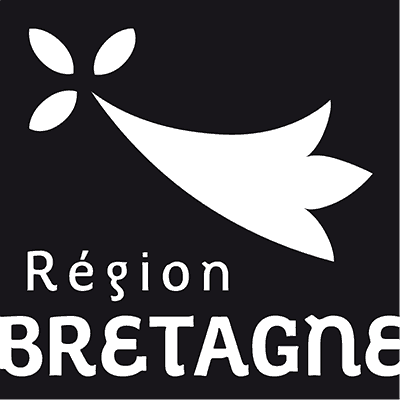[NOMADE DES MERS] Living Energy Farm: A community free of fossil fuels ?
Date of publication : 3 novembre 2021
Author : Guénolé Conrad
Location : Louisa, Virginia, USA
During their American stopover, the crew of the Nomade des Mers went to the rolling plains of Virgina to meet the Living Energy Farm. An intentional community of a dozen people who have achieved an impressive level of energy and food autonomy thanks to low-tech!
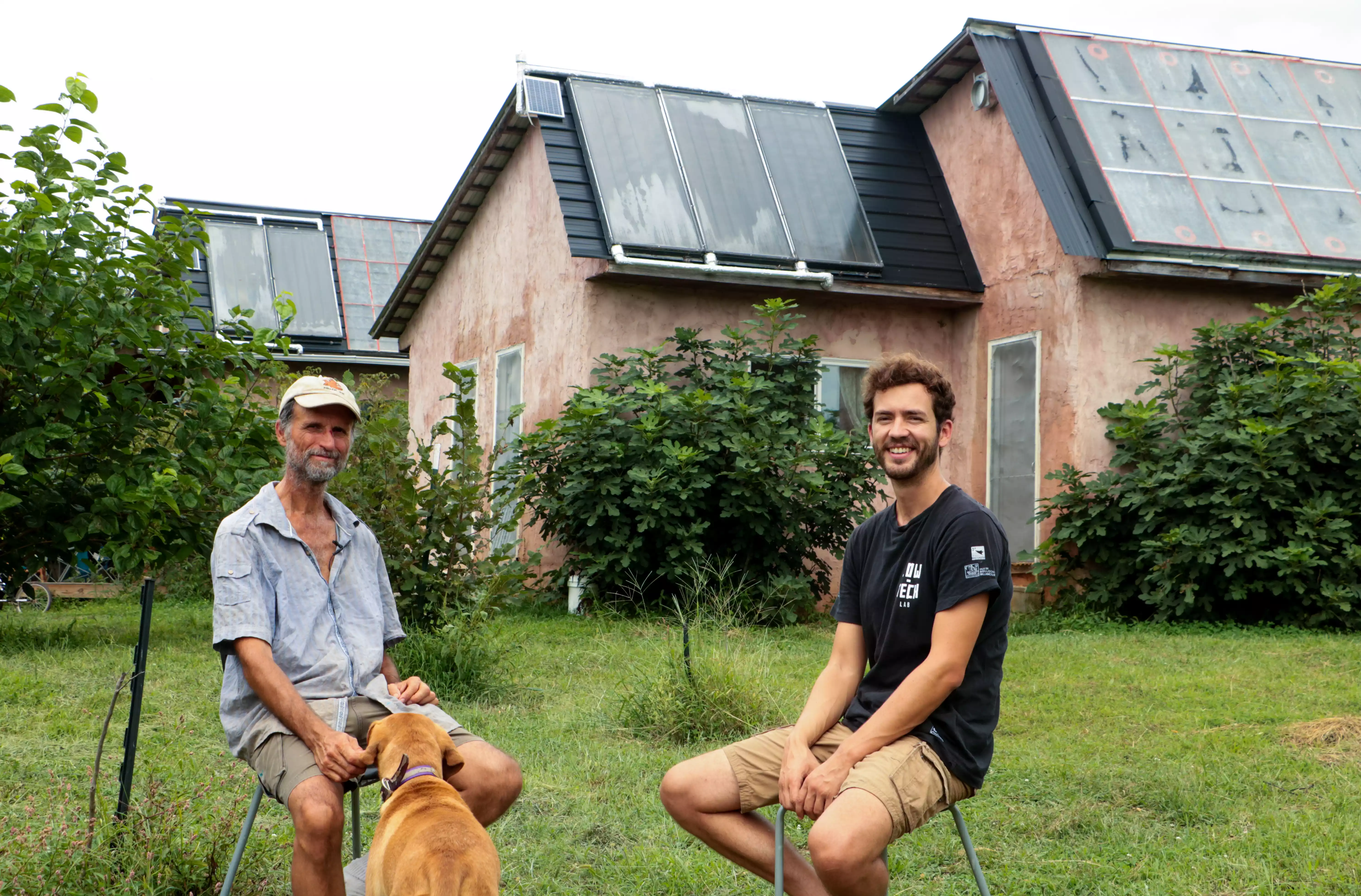
When we arrived in the United States, the presentation of our project often resulted in a smile accompanied by the following question: “Are you sure you’re in the right country? We have to admit, this is not the first image that comes to mind when talking about the “States”. However, even in the country of the triumphant consumerism, some people have chosen a sober and happy life. This is the case of Alexis Ziegler, one of the founders of the Living Energy Farm (LEF). An intentional community of a dozen people, living and working together in the village of Louisa, Virginia.
Their project? To prove that a fulfilling and comfortable life is possible without fossil fuels.
“At LEF, we have been experimenting for 10 years with technologies that are truly sustainable and accessible to all. We attach great importance to the fact that our way of life and the systems we use can be reproduced by the whole population. Otherwise, ecology will remain the domain of a privileged few.”
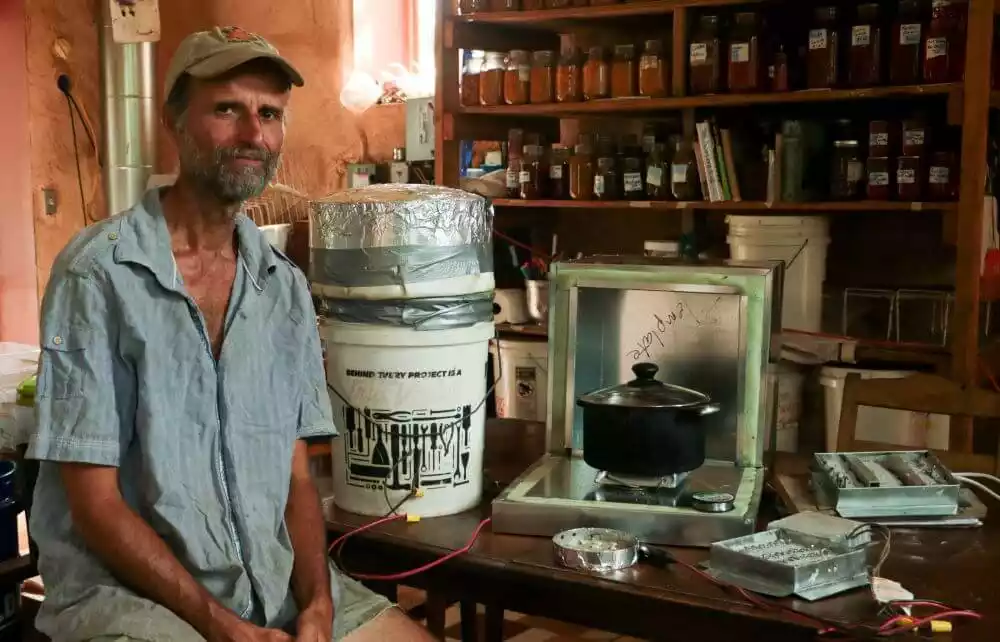
We had rarely visited a place so advanced in terms of low-tech. These people had experimented, during several years, in the same place, in complementarity, almost all the technologies we studied during these 5 years of travel. The production and management of their energy is without a doubt, the field where their experimentation went the furthest. Most of the community is powered by a Daylight Drive DC microgrid. In other words, a photovoltaic grid in direct current without battery storage, regulation, nor electronics. The sun rises, the engines run. The night falls, they stop. This approach brings a concrete answer, relatively unique at this scale, to the issues related to photovoltaic energy and autonomy. Alexis explained to us the main energy principles they applied to design this place:
1. Community level
“At LEF, cooperation is by far our most important “technology”. Living at the community level, we can drastically reduce the amount and cost of energy we need to produce per person to live at a similar level of comfort to others, without using fossil fuels. It is also extremely valuable to take advantage of the skills and energy of an entire group to meet your basic needs, each according to their abilities and age.”
2. Super-insulated buildings
“Our buildings are designed on a collective scale. A few large spaces, rather than many small ones, and very thick walls. In our case, 60cm thick straw bales, coated with earth. Inexpensive and locally available materials. To reduce your energy needs is always more profitable than to produce it.”
3. Limiting the need for electrical energy and using inexpensive means of storage
“Electrical energy is relatively expensive and polluting to produce and store. For many applications, it is not relevant. For example, to heat one’s home or water. Here, we use solar thermal energy:
-
On the south-facing roofs of our buildings, we have installed solar thermal collectors. The hot air is sent into the ground of the buildings, which serves as a thermal battery, thanks to a blower. This is extremely efficient and inexpensive compared to an electric radiator. This allows us to use firewood only about fifteen days a year, when the temperatures are really low. In the summer, this system serves as an industrial-scale solar dryer for preserving our seeds and fruits.
-
We also have solar water heaters on the roofs. The hot water is sent by small DC pumps to three 400L hot water tanks. They have a price, but it allows us to compensate for the intermittence of the sun and to enjoy plenty of hot water, even at night, without electric water heaters or chemical batteries.”
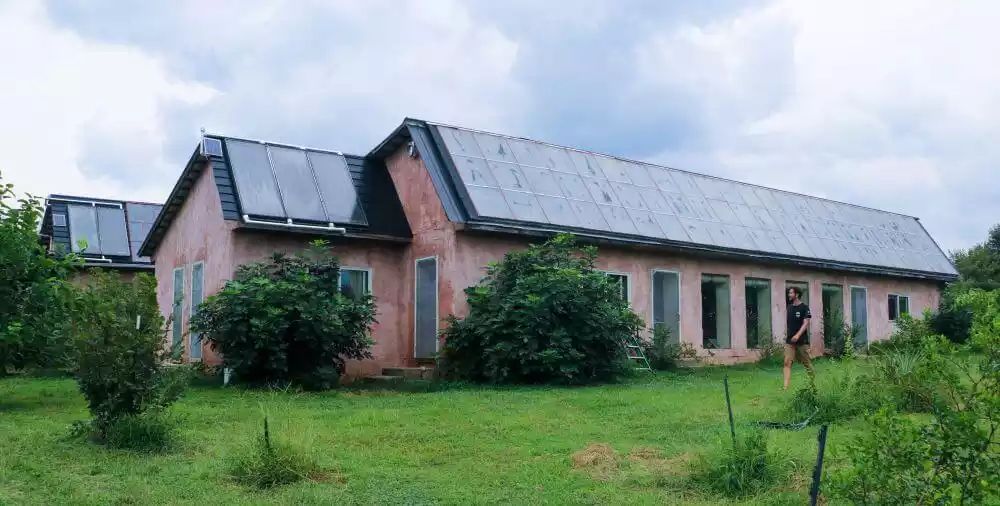
4. A Daylight-Drive DC solar microgrid
“At LEF, we don’t use alternative current (AC) like in most homes. All our equipment is powered by direct current (DC) motors. Why?
AC power has the advantage of moving easily over long distances but has a big disadvantage: AC appliances are not flexible. They can only withstand very small voltage variations without being damaged. This requires a lot of electronics to get the right input signal (voltage regulator, inverter…). DC motors in comparison, are robust and can withstand large variations in input voltage. We can therefore use the electricity from photovoltaic panels directly, without any regulation. It is much cheaper and more resilient.
Another advantage is that we can run motors that exceed the total assumed power of the photovoltaic park. With 1.4kW of PV panels we can run several motors that would each require that much power to operate in AC. The motors simply speed up or slow down as the power supply fluctuates, but they work. That’s the magic of DC motors!
This system allows us to do all kinds of work. We pump water, produce cold, cut wood, grind grain, wash clothes and run a bunch of shop tools. We love this system.”
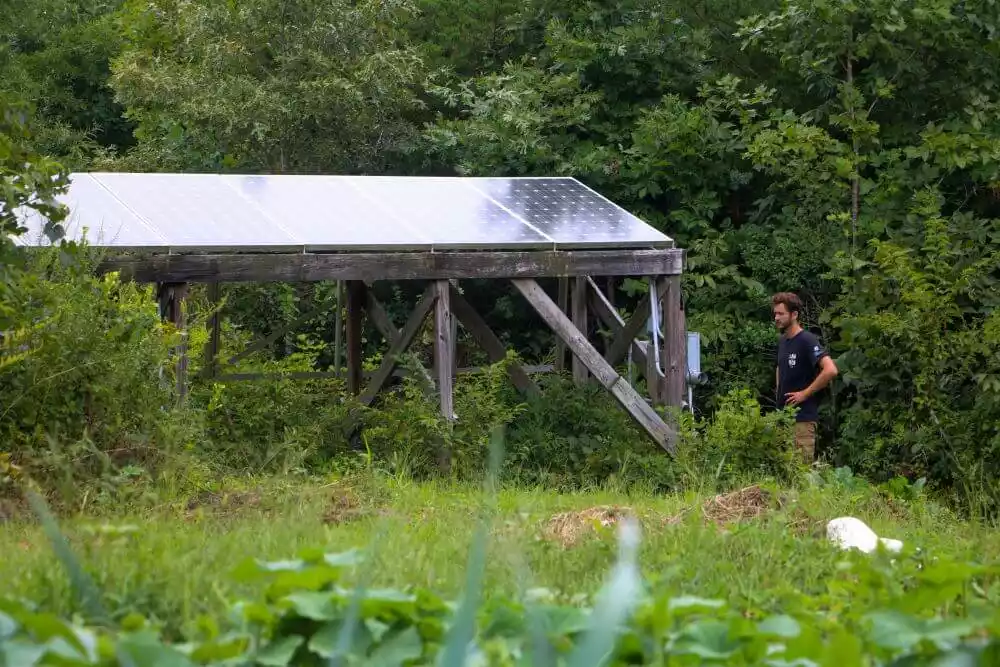
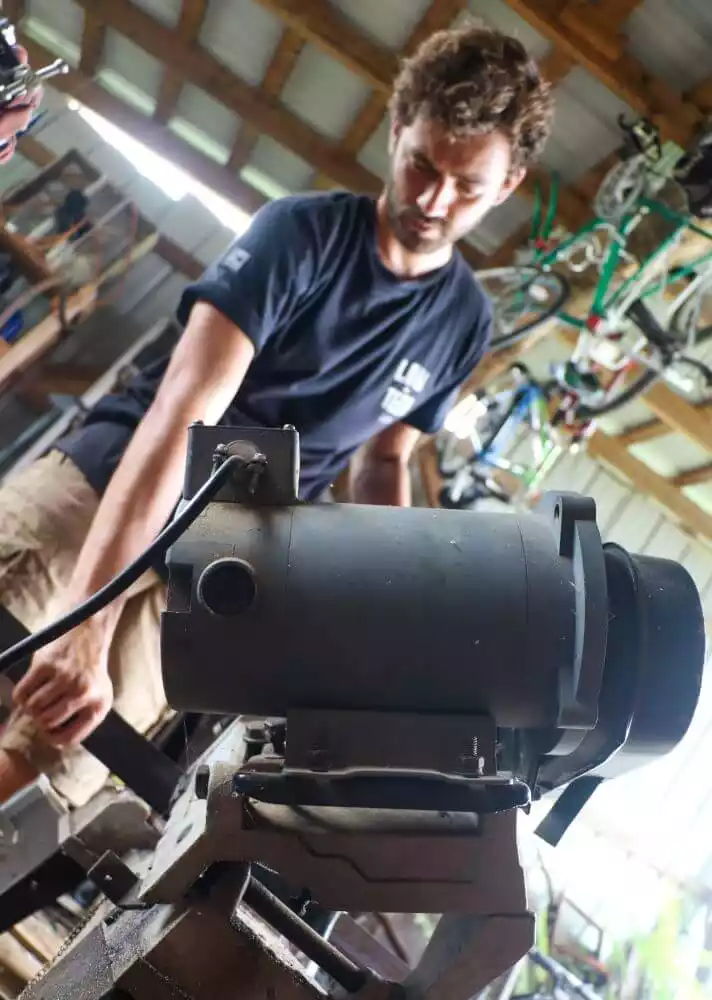
5. Several independent photovoltaic production circuits.
“Our microgrid is composed of several independent circuits:
- A “Daylight Drive” 180V DC circuit, to run all the machines in the workshop, the blowers for heating, the well pump and the food processing machines.
- A 12V circuit for the light.
- A 12/24V circuit for phones, computers and the fridge
- Three 12V circuits to power solar water heater pumps
These multiple circuits ensure a total resilience. In case of failure on one of the circuits, the others can compensate. In 8 years, our lights have never gone out, we surf the net and take hot showers as much as we want.”
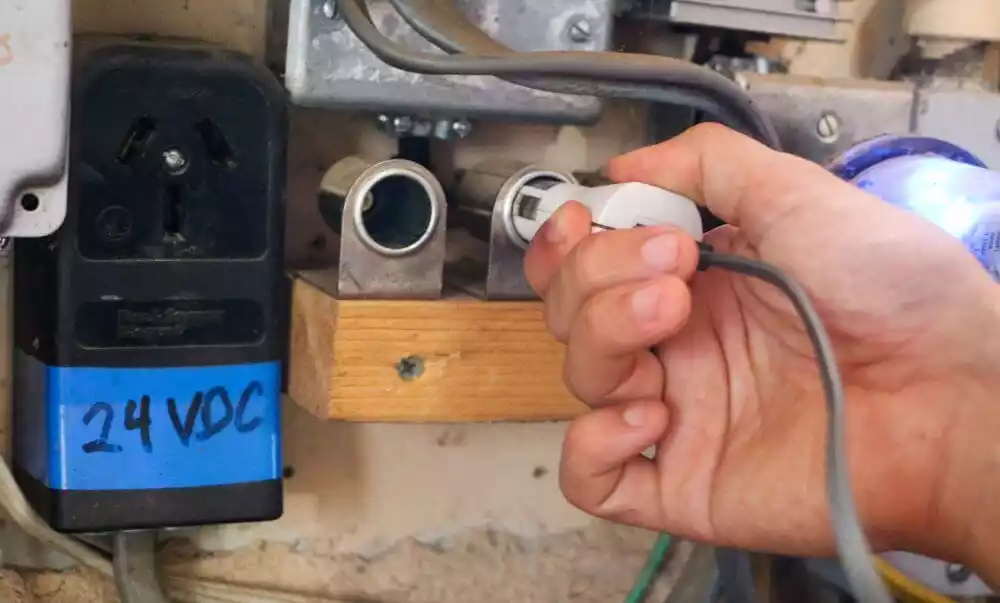
6. Sustainable batteries
“90% of the electricity produced by our network is consumed directly and does not go through batteries. But for light, internet access or to charge our electronic devices at night, we still have some batteries. But not lead or lithium batteries! They are extremely fragile and must be replaced around every 5 years.
We use Iron-Nickel (NiFe) batteries. Invented in 1901 by Thomas Edison, these batteries have never been equaled for their robustness and longevity. They are more expensive to buy and less energy dense but their high tolerance to abuse (prolonged partial charge, short-circuiting, prolonged deep discharges, mechanical shocks, freezing) allows a great peace of mind for at least 30 years, the lifetime of our solar panels.”
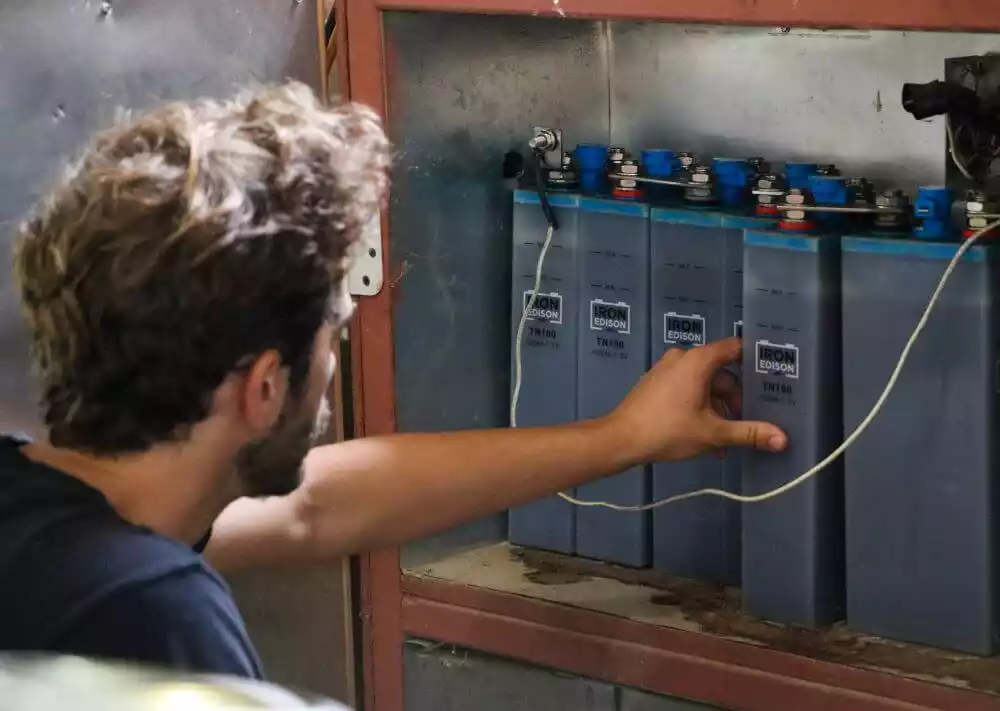
7. Cooking with Renewable Energy
“Food is essential to life, but storing and preparing it comes at a price. Here are the solutions we’ve found.
For storage:
- Canning, solar dehydration and fermentation to make use of our surplus and store food for winter.
- A super-insulated DC solar fridge. We did not build it, it is sold by the Sundanzer company. It produces cold when the sun is shining and keeps it cold at night thanks to very thick walls. The operating cost is about 5% as much as running a refrigerator from a typical off-grid battery set.
For cooking:
We use a mix of solutions: biogas, rocket stove, solar oven and recently a solar photovoltaic oven! Each one has its advantages and disadvantages.”
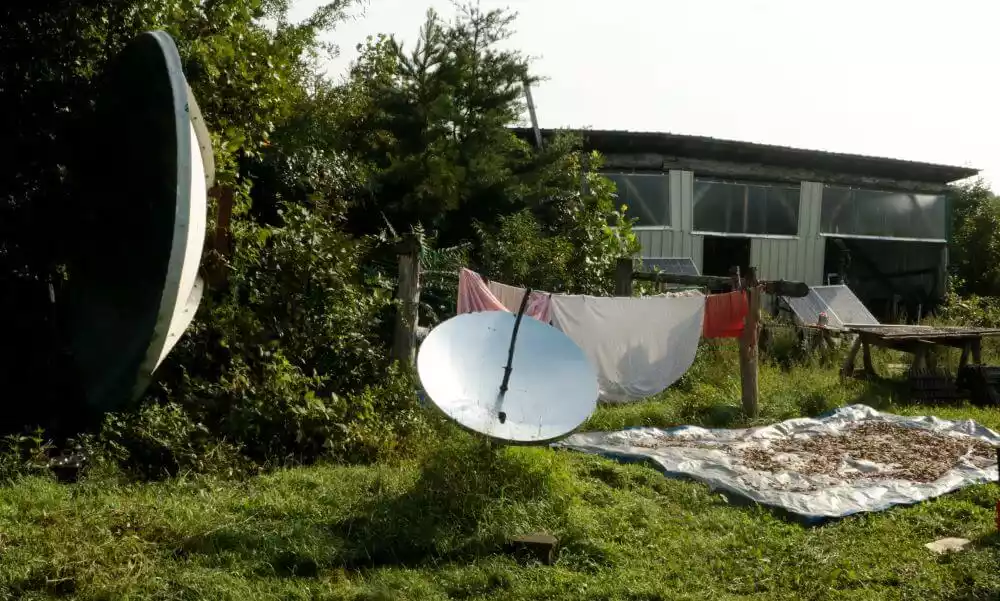
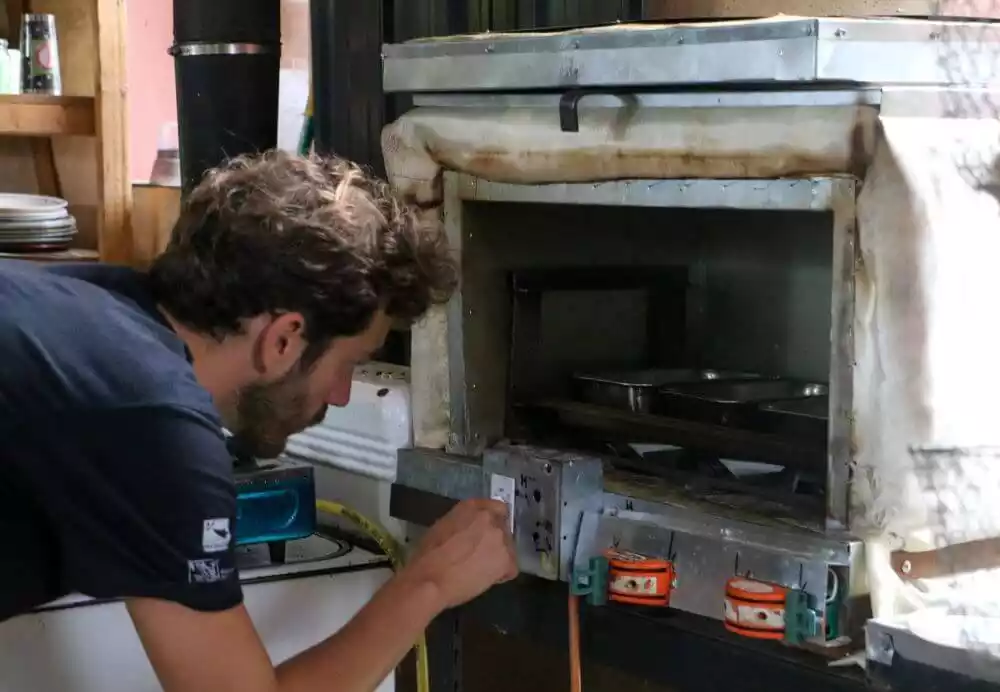
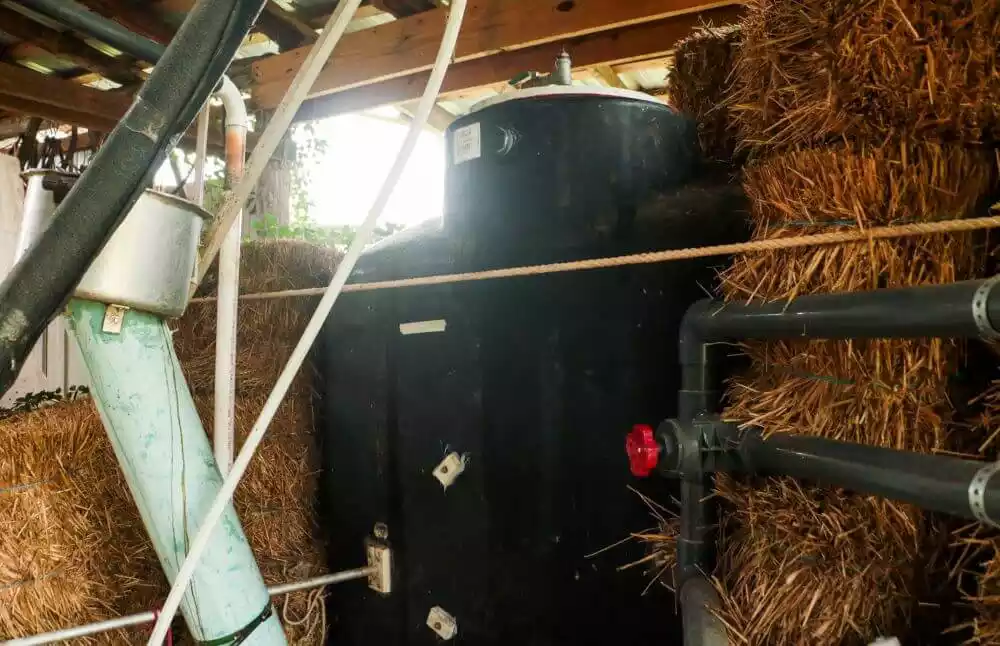
8-Growing your own fuel
“We run small tractors at the farm. I wanted to test to what extent it was possible to produce the fuels necessary for their operation. For a long time I was fascinated by gasifiers. Engines working by pyrolysis of wood, as it was done in Europe during the Second World War. They turned out to be too complicated (and a bit dangerous…). Today, we prefer turpentine.”
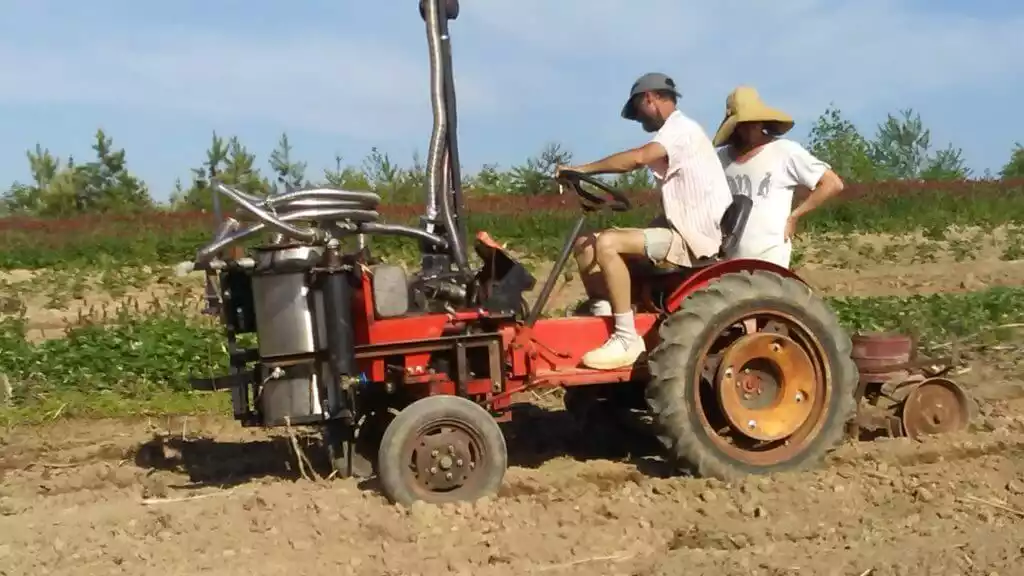
So much for the energy aspect, but the food autonomy achieved by this community is just as impressive, although based on more widespread methods, such as permaculture.
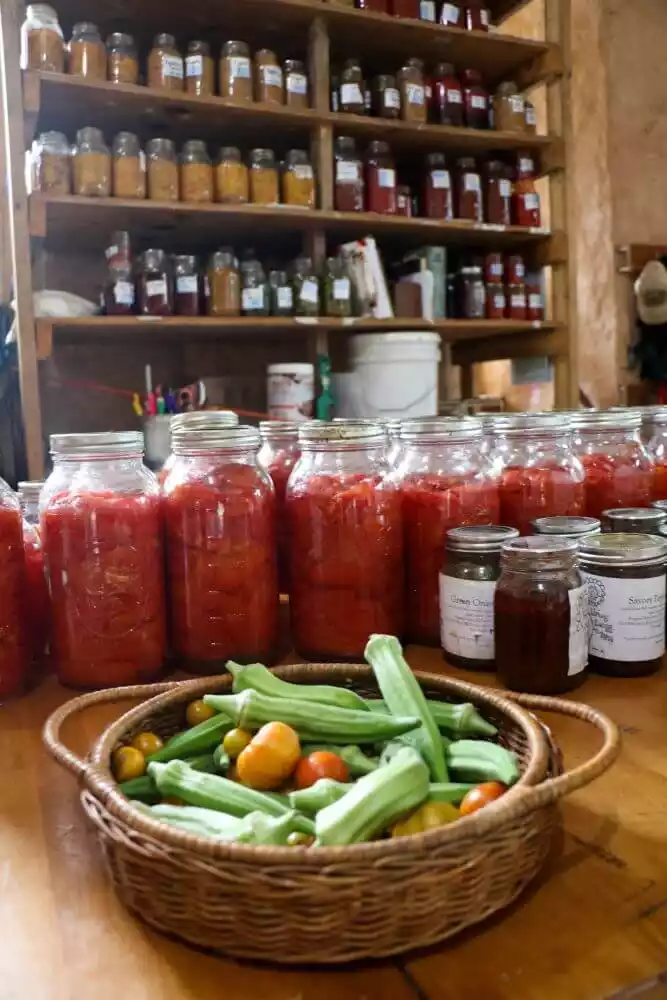
In addition, the community derives some income from the sale of peasant seeds and exchanges labor and products with neighboring communities. In particular, Twin Oaks, a pioneering ecovillage of over 100 people since 1967.
We come back to the boat, with energy and dreams in our eyes. Technological locks have just been opened in our heads. But with them come questions; why isn’t the use of DC networks more common if they have so many advantages? Alexis has her own ideas on the matter. In short, old habits taken at the end of the 19th century for reasons that are no longer relevant but are still very lucrative… This article from Low-tech Magazine looks back at these historical choices: HERE
Meeting this community conforted us in the fact that a low-tech future in technically feasible ! Thanks to these pioneers for their teachings !
Let’s get to work.
